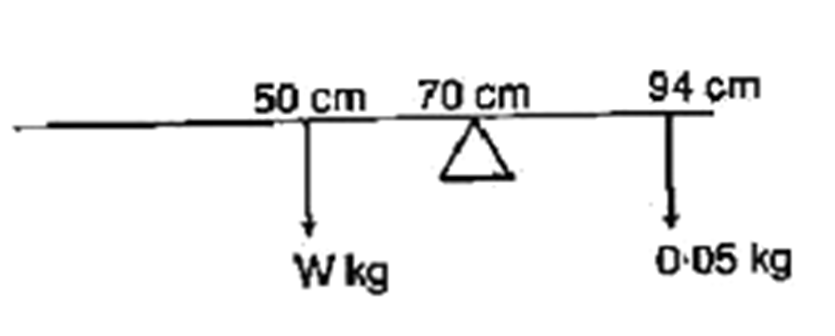ICSE physics
Sponsor Area
Define one Newton.
ii) Write the relation between S.I. unit and C.G.S. unit of force.
i) One Newton is the amount of force required to produce an acceleration of 1 m/s2 in a body of mass 1 kg.
ii) 1 N =1 kg x 1 m/s2
= 103 x 102 gm cm/s2
1 N = 105 dynesSponsor Area
Where does the position of centre of gravity for,
i) a circle lamina
ii) a triangular lamina?
i) Centre of the circle or the point of intersection of diameters.
ii) Centroid or the point of intersection of its medians.
A coolie carrying a load on his head and moving on a frictionless horizontal platform does no work. Explain the reason why?
There is no work because the angle between the force applied (vertically upwards) and displacement of the load (along the horizontal) is 90o.
Using the formula,
W = Fd cos θ
W = Fd cos 90o = 0A uniform metre scale can be balanced at the 70.0 cm mark when a mass of 0.05 kg is hung from the 94.0 cm mark.
i) Draw a diagram of the arrangement.
ii) Find the mass of the metre scale.
i) The arrangement is as shown in the picture.
ii)
Let W be the wt. of the scale,
By principal of moments,
W x (70 – 50) = 0.05 (94 -70)
20 W = 0.05 x 24 
A man can open a nut by applying a force of 150 N by using a lever handle of length 0.4 m. What should be the length of the handle if he is able to open it by applying a force of 60 N.
Equating the torque in both the cases:
E1l1 = E2l2
150 × 0.4 = l2 × 60
Sponsor Area
Mock Test Series
Mock Test Series





